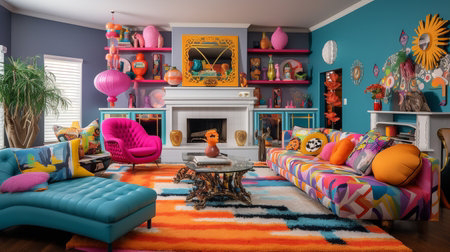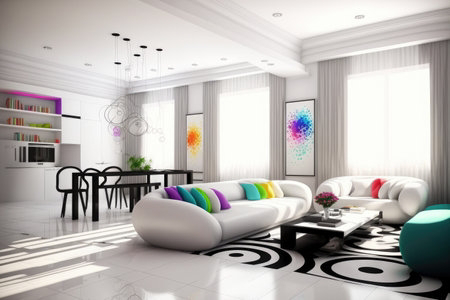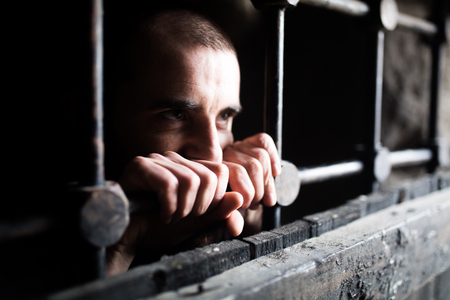THE POWER OF COLOURS
I like colours, they are good. They make me
feel cool. A colourful interior in every part of the house can be helpful in so many ways. Let's learn from something I dug up online. Read below
Color Therapy Types, Techniques, and Benefits
By Toketemu Ohwovoriole
Updated on January 12, 2024
Medically reviewed by Steven Gans, MD
Color therapy, also known as chromotherapy, is a form of therapy that uses color and light to treat certain mental and physical health conditions. We can trace this form of therapy back to the ancient Egyptians. They made use of sun-filled rooms with colored glasses for therapeutic purposes.
Although color therapy has gained some popularity over the years, it’s still not a widely accepted form of therapy in Western medicine. Many medical experts consider it to be pseudoscience or quackery.1
While color psychology is the study of how different colors can influence human behavior and perception, color therapy is different. It is based upon the unproven assumption that certain colors can impact people's "energy" and impact health outcomes.
At some point, we’ve all experienced the ways in which color can affect us. For some people, seeing the green in nature on their daily run is an instant mood booster or they instantly feel a little better wearing a favorite yellow dress. The practice of color therapy can be traced to Indian ayurvedic medicine, which claims that the application of certain colors can correct imbalances in our body's chakras.
Types of Color Therapy
In color therapy, it is believed that different colors are able to impact the body differently.
• Red: Red is used to energize or invigorate a person who might be feeling tired or down. However, red may also trigger people who might already be tense.
• Blue: Chromatherapists use blue to try and influence depression and pain. Darker shades of blue are also thought to have sedative properties and may be tried for people who experience insomnia or other sleeping disorders.
• Green: Green is the color of nature, and according to chromatherapists, it can help relieve stress and relax a person.
• Yellow: Yellow can be used to improve your mood and make you more happy and optimistic.
• Orange: Orange, much like yellow, can be used to elicit happy emotions from people. The bright warm color is also thought to be able to stimulate appetite and mental activity.
The Color Blue: Meaning and Color Psychology
Techniques of Color Therapy
There are two major techniques of color therapy. It can either be done through sight, that is, by looking at a particular color in hopes that it elicits the desired response in your body, or by directly reflecting certain colors on parts of the body.
Color therapists believe that color can enter our bodies either through our eyes or skin. Each color we can see has its wavelength and unique frequency. Each unique frequency has a different effect on people and is used for different purposes. Warm colors are typically used for stimulating effects, while cool colors are used for calming effects.
What Color Therapy Can Help With
Chromotherapy is considered a type of alternative medicine treatment. It has been purported to help with a variety of conditions, including:
• Stress
• Depression
• Aggression
• High blood pressure
• Sleep disorders
• Anxiety
• Certain cancers
• Skin infections
It is important to note that there is no significant evidence that color therapy is effective for any medical condition. According to the American Cancer Society, available scientific evidence does not support any claims that use of light or color therapy are effective in treating cancer or any other illnesses.
There is currently no research to support that color therapy can solely be used as an effective treatment for any of these conditions.
The Best Online Help for Depression of 2024
The Best Online Therapy for Anxiety of 2024, Tried and Tested
Benefits of Color Therapy
Over the decades, color therapy has been purported to provide several benefits ranging from physical to mental, including:
• Stress relief: Certain colors like blue and green are thought to have soothing effects on people who are stressed or anxious.
• Boost your appetite: Warm and stimulating colors are thought to boost your appetite when you struggle with having a desire for food.
• Seasonal affective disorder: People mainly suffer from seasonal affective disorder during colder weather because of the lack of sunlight. Certain types of bright light therapy have been shown to be of benefit for this mood disorder. Color therapy also suggests the unproven idea that warm colors like yellow and orange could also help with this.
• To boost your energy: Colors such as red and yellow are believed to boost your energy and make you more motivated.
The Best Online Therapy Programs We've tried, tested and written unbiased reviews of the best online therapy programs including Talkspace, Betterhelp, and Regain.
Things to Consider
While the premise of color therapy is that certain colors elicit specific emotions from most people, this isn't always the case. Human beings are unique. The effects of certain colors on people may range from person to person. Colors most people might find calming or soothing might be anxiety-inducing or depressing to others.
How to Deal With Stress Insomnia
How to Get Started
While the science behind color therapy is still largely unsubstantiated, it’s completely harmless to practice certain aspects of color therapy on your own. Here are some ways you can get started with experimenting with color therapy:
• Get rid of blue lights at nighttime for better sleep. Research has shown that the blue light in your laptops, phones, and televisions can affect your circadian rhythm, which affects your sleep quality. Wearing anti-blue light glasses or turning the settings on your gadgets to warmer yellow tones has been found to help. 2
• Bask in nature. The greens of leaves and grass we get in abundance in nature can positively relax us.3
• Be intentional about color choices. When picking colors for anything, from the color of the walls in your room to the color of clothes you wear, choose colors that you find stimulating or elicit positive emotions.
It’s important to reiterate that color therapy doesn’t serve as a definitive treatment for any mental or physical health conditions. If you are experiencing a condition such as depression, it’s important to speak to your doctor about it.
Copied from
https://www.verywellmind.com/color-therapy-definition-types-techniques-and-efficacy-5194910
Why not try fixing your house accordingly. Some colourful interiors you may choose from. All images below copied from br.123rf.com
Tosin Oke















Comments
Post a Comment